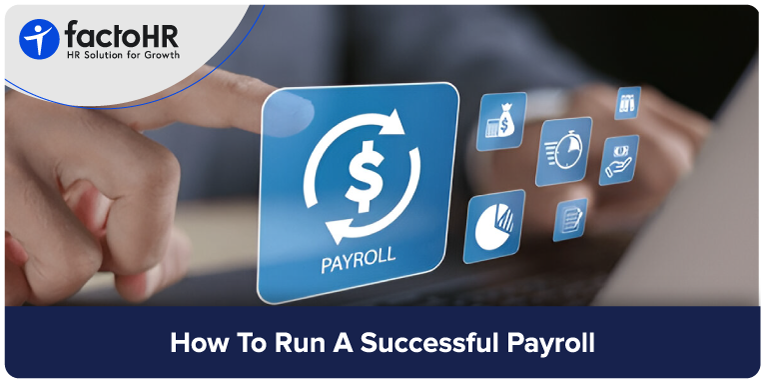Payroll Checklist: How to Run a Successful Payroll

Table of Contents
Consider the process of launching a new project within an organization. Before execution begins, a detailed project plan is developed, outlining objectives, milestones, timelines, and responsibilities. This structured approach ensures that every phase of the project is executed efficiently and with minimal disruption. Similarly, payroll processing requires a defined and systematic framework to maintain accuracy and compliance.
A payroll checklist acts as a guide for organizations during the payroll process. The process is divided into three stages: pre-payroll preparations, actual payroll processing, and post-payroll activities. The integrity of the entire payroll processing can be affected if there are delays or compliance errors.
A payroll checklist is an operational document that allows organizations to comply with statutory regulations and company policies. It helps align with established standards and ensure compliance with labor laws.
This article outlines the complete payroll process and identifies key tasks that must be addressed at each stage to ensure seamless and compliant payroll operations.

What is a Payroll Checklist?
A payroll checklist acts as a guide for organizations, which provides necessary steps to be followed at each stage of the payroll process. It helps the HR and finance departments run a smooth payroll. The payroll checklist is a standard procedure that needs to be followed during payroll processing.
It does not matter if the salary cycle is weekly, biweekly, or monthly; the checklist remains the same for all formats. Furthermore, it facilitates timely payments, enhances accuracy, and ensures compliance, reducing errors.
Almost every organization in India is finding payroll processing challenging due to changing labor laws and regulations. This is why it is essential to have a structured payroll checklist to help avoid legal issues and penalties. A payroll checklist serves as both a template for the current year and a reference for future years. It updates as per the changing labor laws and tax slabs.
What are the Benefits of a Payroll Checklist?
Any mistake in the payroll can lead to a delay in payments or incur penalties. To prevent this from happening, the payroll checklist serves as a guide for the organization.
- Minimizing Errors: A payroll checklist allows organizations to reduce payroll-related errors. Therefore, the risk of unwanted penalties is eliminated.
- Maximizing Efficiency: With fewer errors, payroll operations speed up. Organizations can boost employee satisfaction as they receive their salaries on time.
- Standardize Procedure: A checklist allows organizations to navigate through all payroll activities, including data collection and reporting.
- Regulatory Compliance: The payroll checklist helps ensure compliance with current taxes and laws. It helps meet federal and state laws and saves from incurring penalties.
- Saving Time: As the payroll checklist is standardized, HR professionals can save time due to minimal errors.
Who Needs a Payroll Checklist?
Payroll is a backend process, so it is necessary to understand who needs a payroll checklist. These are the stakeholders who will use the payroll checklist.
- HR Department: HR professionals’ core duties include assembling employee data and processing tax deductions relevant to labor laws. A payroll checklist helps them to manage all of these functions effectively.
- Finance Department: Finance departments are responsible for verifying the accuracy of the statements. It is necessary to provide the checklist to this department, as they process the salaries.
- Business Owners: In a small or mid-sized company, the business owners keep an eagle eye on the payroll process. The payroll checklist will enable them to monitor payroll processes strictly.

Detailed Guide to Run a Successful Payroll Checklist
Pre-Payroll Checklist
Employee Information
Employees’ information should be up-to-date, including their bank details and other relevant information. The record of new hires should be updated, and former employees should be removed.
Timesheet
HR professionals should collect employees’ timesheets to check their total working hours and overtime.
Leave Balances
Before scheduling the payroll, it is necessary to review the leave balances of employees, as miscalculations can lead to errors in salary payments.
Performance Bonuses, Deductions, or Commission
Analyze the performance reports of employees and check if any bonus, deduction, or commission is to be implemented in the employee’s salary. Delaying bonuses may lead to employee dissatisfaction.
Payroll Checklist
Import Data into Payroll System
Enter the employee information into the payroll software to initiate the payroll process. Errors in importing employee data can result in payment delays and incorrect payments.
Compute Gross Income
The payroll system calculates the gross pay. It is calculated based on hours worked, overtime, bonuses, commission, or any additional compensation.
Make Necessary Deductions
Deductions include taxes, provident fund, insurance premiums, and contributions related to a retirement plan. This checklist guarantees payroll compliance.
Determine Net Income
Payroll software makes deductions from gross income to achieve net income. An employee receives the net income or cash in hand.
Double-Check
Verify or double-check before scheduling the payroll. Fix the mistakes, if any, immediately before the payroll scheduling date. This ensures the payroll accuracy is maintained.
Post-Payroll Checklist
Circulate Payslips
As the salaries are processed, the pay stubs should be circulated immediately.
Payslips should reflect gross salary, deductions, and net salary. The mode of delivering payslips can be in printed or digital form.
Update Records
After payroll is processed, the payroll records must be updated immediately. Such records enable the tracking of pay, taxes, benefits, and other forms of compensation. The finance team can use them to look at how much the company is spending on wages.
Transfer Tax Liabilities
Employer is legally required to collect tax from salaries. The tax collected should be paid to the government before specified deadlines. If organizations fail to comply with the deadlines, they might face legal consequences and penalties.
Filing Forms
Companies need to submit forms, like Form 941 or Form 720, after paying taxes. This activity proves that their business is conducted ethically.
Difference Between Weekly, Biweekly, and Monthly Payroll? Does the Checklist Change?
No, the checklist does not change for any of the above payroll formats. It becomes more intact in weekly and biweekly payroll, but it does not change.
- Weekly Payroll: The salaries are paid weekly or are released 4 times a month. Weekly payroll increases the workload of HR, as the number of hours, leaves, and performance reviews are to be checked and calculated frequently.
- Biweekly Payroll: Biweekly payroll simplifies overtime calculations and allows HR professionals to make timely payments.
- Monthly Payroll: Monthly payroll processing is one of the most commonly used methods. Companies credit employees’ salaries at the end of every month.

Conclusion
Payroll is an intrinsic part of any organization. Mistakes in payroll processing can affect many areas of the organization. Employee satisfaction is one of the significant factors that is affected. Salary delays, miscalculated salaries, and incorrect deductions can erode trust among the employees. Therefore, having a standardized process will eliminate minor issues and optimize the payroll process.
FAQs
What Should be Included in a Payroll Checklist?
The checklist should include all the activities performed during the payroll process. The payroll checklist is divided into three parts: Pre-Payroll Process, Payroll Process, and Post Payroll Process.
Can Payroll be Automated?
Yes, Payroll can be effectively automated. Payroll automation eliminates manual tasks and accelerates payroll operations without compromising accuracy.
What are the Statutory Components of the Indian Payroll?
In India, there are several statutory elements for the payroll. A few of them are:
- Employee Provident Fund (EPF)
- Employee State Insurance Co-operation (ESIC)
- Income Tax (IT)
- Professional Tax (PT)
- Labour Welfare Fund
Grow your business with factoHR today
Focus on the significant decision-making tasks, transfer all your common repetitive HR tasks to factoHR and see the things falling into their place.

© 2025 Copyright factoHR


